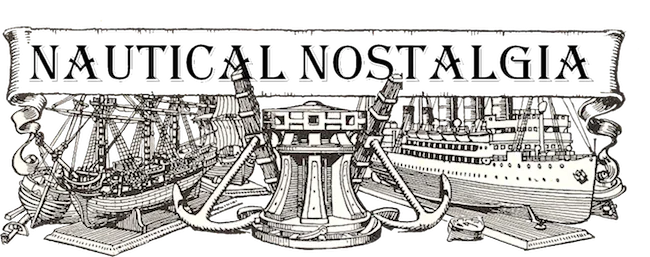From the brush of David Bray


For this month’s “From the brush” I have painted the ship that never was.
As the 1950s came to a close, Cunard was forced to appraise the future of their express North Atlantic service. At the time this was maintained by the “Queen Elizabeth” and “Queen Mary” running a weekly service between Southampton and New York. Both ships were aging, and the question of a replacement was investigated. In 1961 invitations to tender were issued. The proposed vessel would be specifically intended for the Atlantic ferry service. The project was known as Q3. The ship was expected to be around 80,000 tons with an overall length of 990 feet. Power would be provided by quadruple-screw steam turbines producing around 200,000 shp. Steam would be generated from eight boilers running at 850 psi.
A number of proposal drawings, artists impressions and a builder’s model indicated a variety of exterior profiles and configurations. The vessel would have been financed largely by a government loan, and there was no provision for a second vessel as running-mate.
In 1961 it was becoming obvious that the transatlantic passenger trade was experiencing difficulties. Indeed, a new vessel designed specifically for the trade would have been commercial suicide. A more versatile model needed to be developed.
The Q3 project was cancelled in October 1961, and investigations into a smaller dual-purpose vessel commenced. This project was titled Q4, and eventually resulted in the “Queen Elizabeth 2”.
The era of the express liner dedicated to the North Atlantic was over, mainly due to the increasing competition from the jet airliner. In the mid-1960s passenger numbers on the “Queens”, the “United States” and the new “France” were dwindling. It seemed that the day of the passenger liner was over. Nevertheless, the “QE2” entered service in 1969 and carved out a very successful career mostly in the cruising sector.
The painting shows what might have been. One very visual feature of this vessel would have been the funnel configuration. Some illustrations show a conventional red-and-black Cunard livery. The builder’s model shows a more radical arrangement of two all-white slender funnels, the forward one combined with a mast.
In my ‘umble opinion, this was a good idea only on paper. A steamship burning heavy oil creates corrosive soot-laden exhaust. All-white funnels? Hmmm… And the idea of combining a mast carrying radar and electronic equipment with a funnel? Really? I sailed in a number of ships which had the radar aerial mounted on top of the funnel, and I can confirm that this was only a good idea on the naval architect’s drawing board!
I have taken the line that the funnels and mast might have been similar to those eventually designed for the “QE2”. Well, that’s my opinion. I’m sure many readers might disagree. I look forward to brickbats arriving via the “Letters to the Editor”.
I have shown the vessel commencing her maiden voyage in Southampton water. I haven’t given her a name. Would she have been “Queen Mary 2”, or “Queen Victoria” maybe? Who knows ?
Passing the Cadland buoy, she is being escorted by the Red Funnel excursion ships “Balmoral” and “Princess Elizabeth”.
I am indebted to my old pal David Hutchings (author “QE2 – A ship for all seasons”) for help with this painting, also to David L Williams and Richard P de Kerbrech. More information about the Q3 project is contained in their books “Damned by Destiny”, and “Great Passenger Ships that Never Were” .
This article, and others, follow a series which Sea Breezes magazine is publishing, featuring David’s paintings, and the stories behind them.
